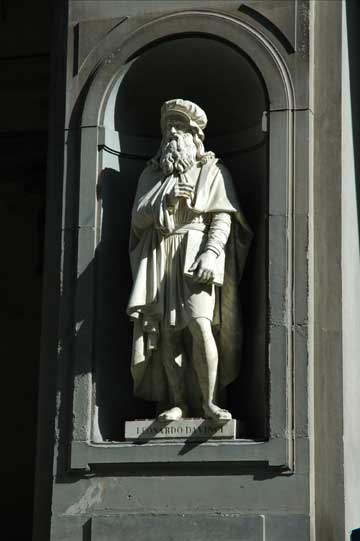 by Preston MacDougall May 19, 2006
Less moving is the central idea in Dan Brown's best-selling novel - The Da Vinci Code - that there she was too. Mary Magdalene in disguise. And the thought that Leonardo would paint his two main subjects anachronistically performing a Village People dance move (the "M" in Y.M.C.A.) is as offensive to his visual artistry as it is to Christianity.
Otherwise, I enjoyed the book - the plot really moved. Like many people, I found it hard to put the book down. In many ways, it took me back to the time I read Star Wars - from Tatooine to the Massassi Temple - in the back seat of a Ford Five-Hundred between Toronto and Hilton Head. Fantasy is a real page-turner. The Da Vinci Code premiered in Cannes this week, with exactly the tepid reaction that a Hollywood blockbuster movie should expect at a festival for art on film. Still, if Ron Howard has done half as good a directing job as George Lucas did, I expect to enjoy the movie. With all the religious controversy comes even greater commercial success. And there isn't a word of fiction in this business plotline. Lost in the commotion, however, is the lasting positive impact that the movie and the book will have. I am referring to the rediscovery of the real Leonardo. In between the print and film versions of The Da Vinci Code, Oxford University Press published a book that paints a picture of "the da Vinci mode". Martin Kemp's Leonardo gets up close and personal with history's most visual thinker. What sets apart the da Vinci mode of thinking and creating is not simply mastering skills in diverse endeavors, as is often mistakenly viewed as the hallmark of a "renaissance man". Leonardo certainly covered many bases as an artist, scientist and inventor. But what was remarkable was the way careful observations of one phenomenon swirled in his highly visual imagination and emerged as daring new theories relating to something seemingly unrelated. Or, as Kemp puts it: "precision and chaos live together in Leonardo's creative process". Leonardo was dismissive of pure philosophy and abstract theory - pseudo-knowledge that "begins and ends in the mind". He saw artists and engineers as "human creators" whose careful observations of nature allowed them to be a "second nature in the world", but only if they remained true to the causes and effects that they experience. Experience itself was central to the da Vinci mode, and the culmination of a good theory was a new kind of experience. Leonardo was a supremely gifted student of geometry, and this enabled him to experience light in ways that are invisible to you and me. Fortunately, to this day we can experience the second nature that he created. And, whether the creation is a portrait of a smiling aristocrat named Lisa, or a painting of the Last Supper, it can be a moving experience. To Leonardo, as much as to anyone before or since, form follows function. Long a key to elements of mechanical engineering design in the da Vinci mode, this principle has proven to be just as valuable to molecular design as practiced by biochemical engineers today. He surely would have delighted in the 20th century discoveries of the wonderful shapes and symmetries of molecules - from the simple V-shape of water to the long helices of DNA. The modern theory of genetics was formed with the help of careful observations of molecular shapes. And advances in genetic engineering have made new life-saving experiences, such as mass-produced insulin and vaccinations, widespread. Theories of chemical reactivity have also been advanced by careful observations of molecular shape. One reaction that my students particularly enjoy is between zinc powder and clumpy crystals of iodine that have semi-regular shapes - like lots of tiny shoeboxes of different sizes, many glued together. Done in the safety of a fume hood, nothing happens until water is added, then an energetic poof of purple haze catches them by surprise. This experiment is called "The Jimi Hendrix Experience".
Publish A Letter on SitNews Read Letters/Opinions Submit A Letter to the Editor
|
||
